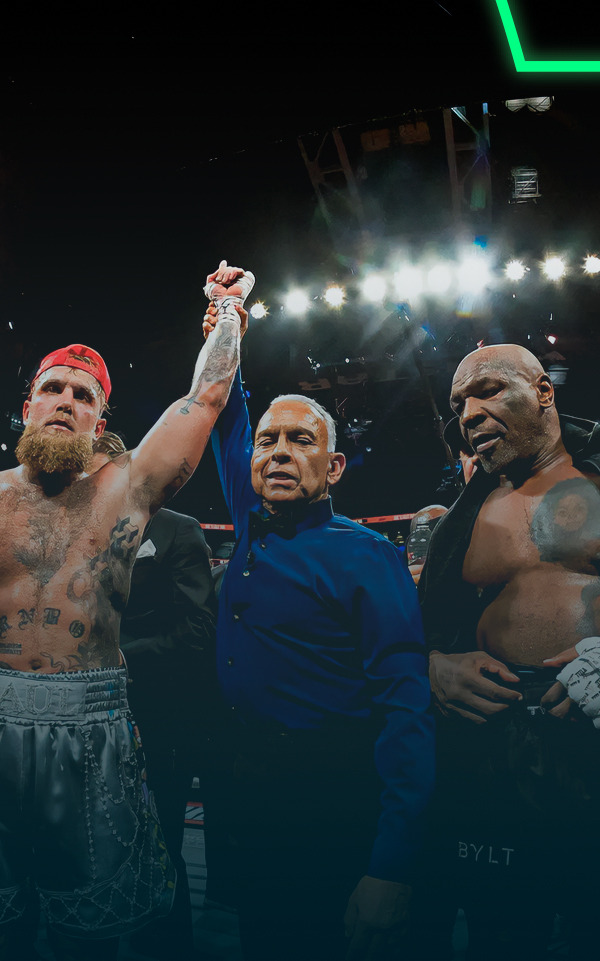Is Netflix prepared to stream major sporting events? Insights from the Jake Paul vs. Mike Tyson fight

Is Netflix prepared to stream major sporting events? Insights from the Jake Paul vs. Mike Tyson fight
The live broadcast of the Jake Paul vs. Mike Tyson boxing match on Netflix marked a significant step for the platform, showcasing its ability to attract massive audiences while exposing critical gaps in its infrastructure. The main event drew an impressive 108 million global viewers, and the preliminary fight between Katie Taylor and Amanda Serrano became the most-watched professional women's boxing match in the U.S., with 74 million viewers.
Despite these achievements, technical issues such as streaming interruptions and inconsistent quality highlighted the challenges Netflix faces as it ventures into live sports broadcasting. With major events like NFL games on the horizon, the company must address these issues to compete in this demanding market.
A steep learning curve for live sports broadcasting
The Paul vs. Tyson event underscored the unique demands of live sports broadcasting. While Netflix has extensive expertise in on-demand content, live streaming poses entirely different challenges. During the preliminary fights, many viewers experienced connection problems, interruptions, and poor video quality, with complaints peaking just before the main event.
This sudden surge in demand exposed vulnerabilities in Netflix’s distribution infrastructure. The simultaneous entry of millions of viewers overwhelmed the platform, demonstrating the need for more robust solutions to prevent similar issues in future live broadcasts.
Lessons from other streaming giants
Although the Paul vs. Tyson event set new viewership records, it is worth noting that other streaming platforms have already ventured into live sports, albeit with smaller audiences. For instance: Amazon Prime Video currently streams NFL games, with Thursday Night Football earning respectable viewership and praise for technical quality, though on a much smaller scale compared to the global audience of Paul vs. Tyson.
Apple TV+ has secured exclusive rights to Major League Soccer (MLS), with games featuring Lionel Messi drawing significant attention. HBO made headlines by streaming the Olympics, marking a new frontier for the platform.
Netflix itself has dabbled in live streaming, though in more modest contexts. Examples include the Netflix Slam tennis match between Rafael Nadal and Carlos Alcaraz in March 2024, and the Netflix Cup, featuring Formula 1 stars in a golf tournament. While these events allowed Netflix to test live formats, the scale and technical challenges were nowhere near those of the Paul vs. Tyson bout. Tyson.
The infrastructure challenge: prevention over reaction
To succeed in live sports, Netflix must go beyond reactive measures and invest heavily in preventive improvements. During the Paul vs. Tyson event, Netflix engineers worked to stabilize the broadcast, reducing disruptions as the main event approached. However, relying on last-minute fixes revealed the limitations of its current infrastructure.
Netflix's content delivery system, Open Connect, must be expanded to handle sudden surges in viewership without compromising quality. Investments in cutting-edge hardware, more robust server networks, and specialized technical teams are critical for delivering a stable, flawless experience.
Sports fans: zero tolerance for failures
Sports fans have significantly higher expectations than typical Netflix viewers. There is little room for technical errors, especially during pivotal moments, as even minor disruptions can lead to irreversible credibility damage.
In addition to the NFL games on Christmas Day - featuring matchups like the Kansas City Chiefs vs. Pittsburgh Steelers and the Baltimore Ravens vs. Houston Texans, with Beyoncé performing at halftime - Netflix has also committed to broadcasting WWE Raw. These events will attract passionate and demanding audiences. To compete with traditional broadcasters like ESPN and CBS in the United States, or Sport TV and DAZN in Portugal, Netflix must not only match but exceed established standards.
The future of live sports on Netflix
The Jake Paul vs. Mike Tyson fight was a critical test of Netflix's ability to handle live sports broadcasts. While the event showcased the platform’s potential to draw massive audiences - 108 million global viewers and 72,000 attendees at the AT&T Stadium in Arlington, Texas - it also exposed weaknesses that must be addressed.
Upcoming challenges, such as the NFL games and WWE broadcasts, will be pivotal. Netflix must deliver flawless streams to win over sports fans and attract advertisers in a competitive market.
Looking ahead, Netflix’s foray into live sports represents a significant opportunity for transformation. If the platform can overcome technical hurdles and meet the high expectations of sports fans, it could redefine how live sports are consumed in the streaming era. However, any missteps in this endeavor could damage its reputation and market standing. The margin for error is non-existent - and the world will be watching.
News
Historic: Women's football clubs surpass €100 Million in revenue
For the first time ever, the combined revenue of top women’s football clubs in key markets has exceeded ...
How to succeed in the Sports Industry? Four tips from Rafael Nadal
Rafael Nadal is renowned for his excellence, determination, and relentless pursuit of victory. With 22 Grand Slam ...
Al-Nassr signs Esports player for record-breaking fee
João Afonso, world champion in FIFA and EA Sports FC, known as "Jafonso," has made history with the most ...
European Leagues and FIFPro vs. FIFA: Lawyer Gonçalo Almeida explains the complaint to the European Commission
The European Leagues, chaired by Pedro Proença, along with FIFPro, has filed a complaint with the European ...
The Thinking Football Summit 2024 secures international recognition
The third edition of the summit achieved its strongest international presence to date, according to the Liga Portugal ...
